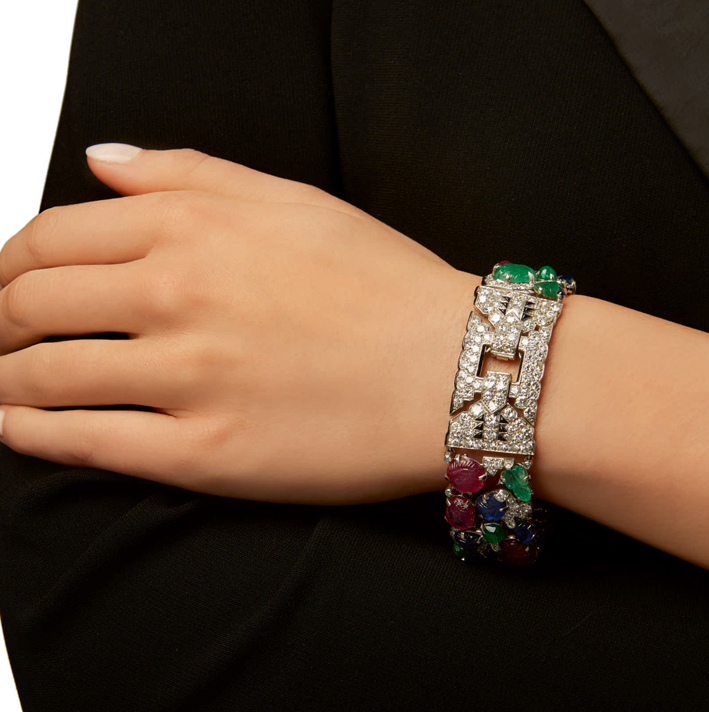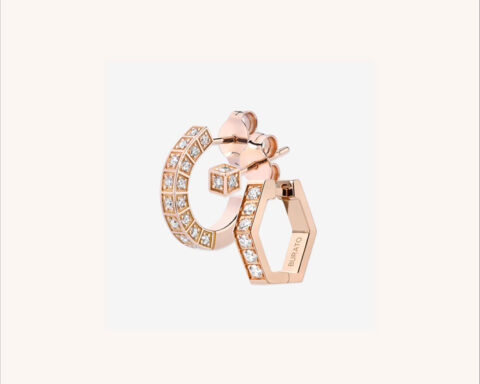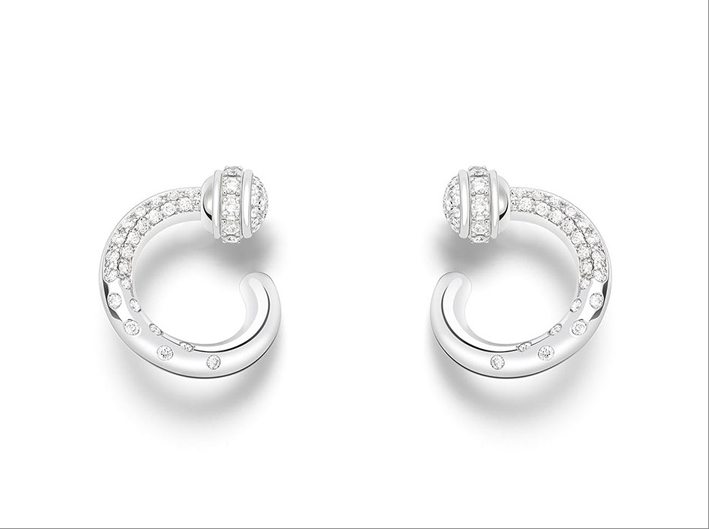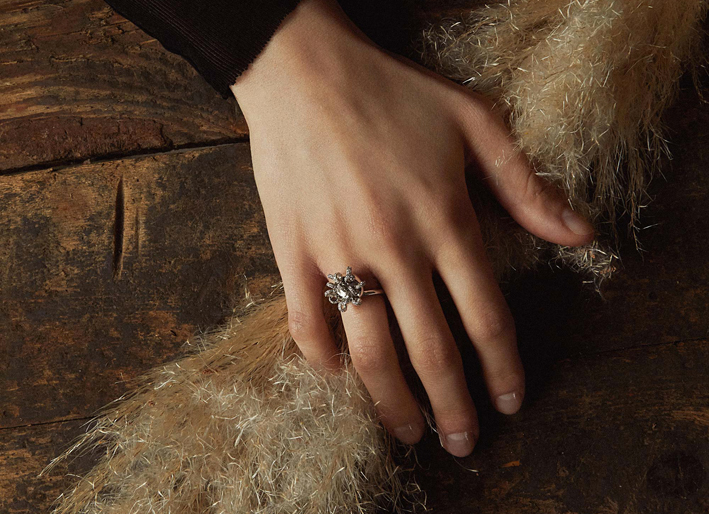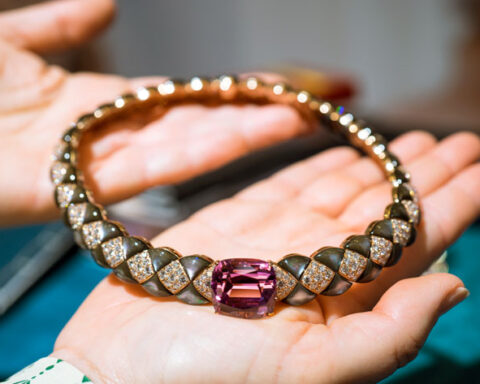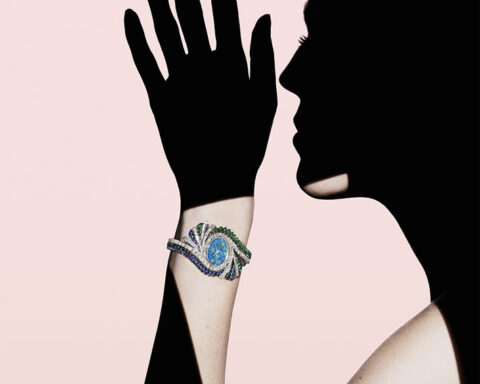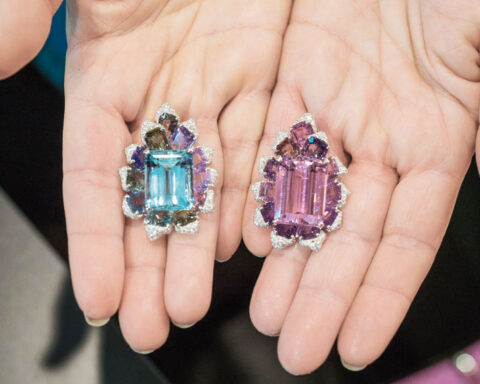Sotheby’s sold the Tutti Frutti bracelet by Cartier for $ 1.34 million. And so it is also an opportunity to tell the story of the Tutti Frutti jewels.
The auction took place online. Created around 1930, the jewel had never appeared at auction before, but has been passed down among the descendants of an American family for more than 30 years. The auction saw five bidders on the field. The Art Deco jewel far exceeded its estimate of $ 600-800,000, and became the highest-priced piece sold in an online auction, as well as the top record for any jewel sold at auction in 2020.
The result achieved for this bracelet is testament to the fact that, even under the most challenging of circumstances, the demand for great art endures. Tutti Frutti jewels have always held a special allure for collectors, capturing the West’s fascination with the ‘exotic’ at a time when travel was relatively limited, much as it is today. Now, of course, we can connect with the touch of a button, which allowed us to engage with bidders worldwide. We look forward to bringing more great jewels to the marketplace in the months ahead as we expand our calendar of online sales.
Catharine Becket, head of Sotheby’s Magnificent Jewels auctions in New York
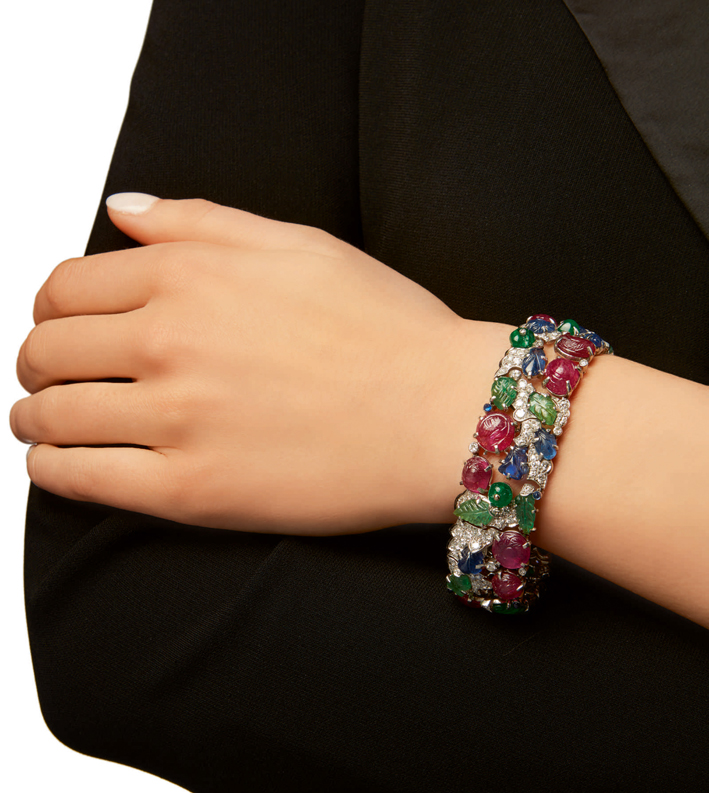
Sotheby’s online jewelry auctions raised 7.4 million through the end of April 2020, with 93% of all lots sold. These sales, explains the auction house, regularly attract participants from over 30 countries and with 30% of all bidders making transactions with Sotheby’s for the first time. This is a trend observed in all global jewelry auctions in 2019 (both live and online), in which over half of all jewelry buyers have made their offers online.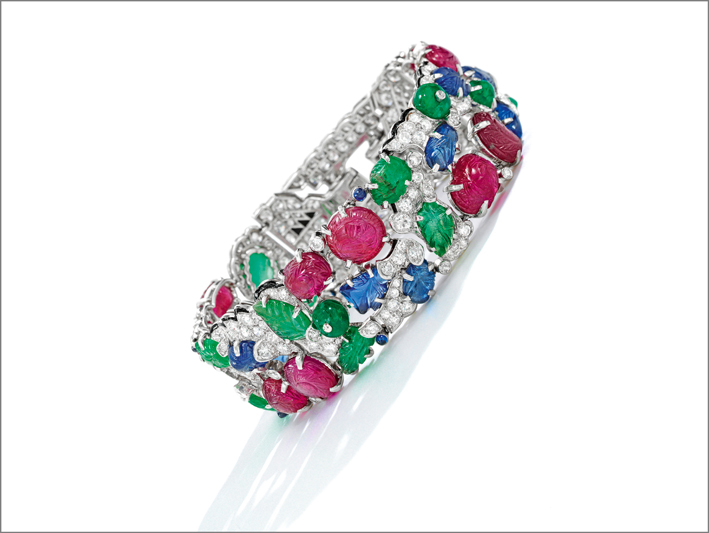
The history of the Cartier bracelet
Celebrated as the holy grail of jewelry, the design of jewels Cartier’s Tutti Frutti are joyful celebrations of consistency, shape and color, which today are sought after as icons of the Art Deco era. The skillful arrangement of carved colored stones and diamonds, together with the precise application of black enamel, uniquely illustrate the marriage between oriental and western influences on the design of Art Deco jewels.
Cartier has produced Tutti i Frutti jewels (Italian definition to indicate fruits of different types, but also a mix of different colors) in a variety of shapes, in particular with bracelets, the most requested. All the jewels share the design with the colored stones cut with the Indian Mughal style, but each piece is unique. The Cartier bracelet sold at auction stands out, for example, for the liveliness of its precious stones, dominated by rubies, and by the black enamel lines, applied on one side only, in an echo of the organic asymmetry of the carved gems . The bracelet returns to a more traditional Art Deco aesthetic with its diamond-set clasp, highlighted by onyx triangles and chevron-shaped clasps.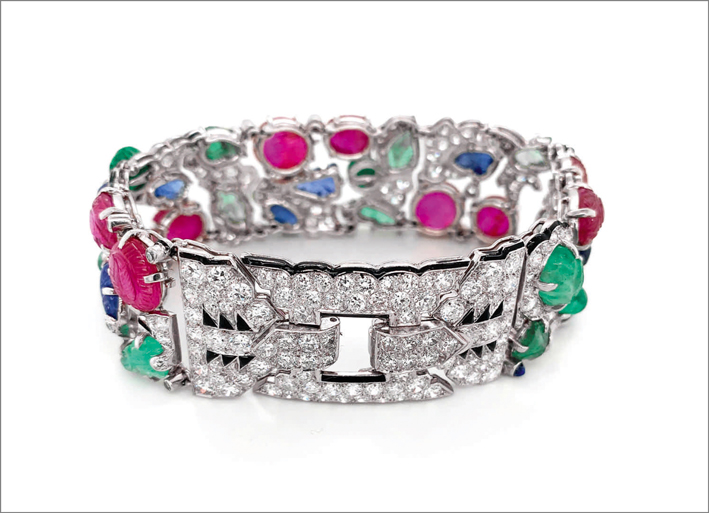
Pierre Cartier’s first foray into the Tutti Frutti style in 1901 was a necklace for Queen Alexandra who, as wife of King Edward VII and by extension of the Empress consort of India, commissioned a piece to complete three Indian-style dresses. The master jeweler’s necklace managed to blend the sumptuous curves and dazzling colors associated with the perceived exoticism of India with the modern craftsmanship techniques perfected at the Cartier House. The necklace opened the doors to future royal commissions and became the basis for the most famous jewels of the oriental-inspired company. However, this happened after 1911, when Pierre Cartier’s brother Jacques ventured to India.
Observing the exotic culture and traditions of India, Jacques’ commercial expedition soon developed into an educational path that would influence the way his family business would design jewelry for years to come. He returned to his London laboratory full of inspiration, incorporating the bright colors and rich textures of carved Mughal precious stones and diamonds made in Cartier. After being shown at the Exposition Internationale des Arts Décoratifs et Industriels Modernes in Paris in 1925, the Tutti Frutti jewels quickly gained popularity among the most fashionable and demanding collectors of the day. And still today they are sought after by collectors.